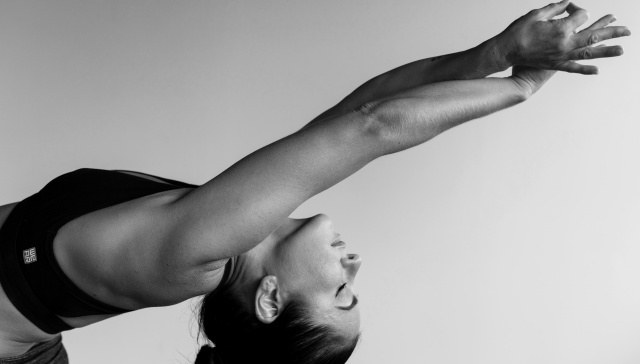Downward Dog
Adho Mukha Shvanasana

What does the sanskrit version of Downward Dog "Adho Mukha Shvanasana" mean?
A foundation pose of yoga, Adho Mukha Shvanasana translates to mean “down" (adho) “face” (mukha) “dog” (svana) "pose" (asana). This inversion pose is a frequent element in iyengar, vinyasa and ashtanga yoga with some use in hatha and kundalini yoga.
Downward Facing Dog benefits
There are many benefits of Downward Facing Dog pose, which is simple and enjoyable to do. The pose both strengthens and stretches the body, while stimulating your blood flow. Incorporating this pose into your practice regularly can also improve your posture.
How to perform Downward Dog
To enter Downward Dog:
- start in tabletop position, on your hands and knees on your yoga mat. Make sure that your shoulders are above your wrists and your hips are above your knees.
- Walk your hands a few centimetres infront of your shoulders and spread your fingers out, checking that your middle finger is pointing forward.
- Inhale deeply, tucking your toes under your feet so they press into the mat and as you exhale press into your hands and lift your hips up to find an upside-down V shaped pose
- Roll over the ball of the feet and try to press your heels down
- Your legs and arms strong, elbow in, kneecaps up, lift the top of your thighs up and back, pressing hard in the mat with your hands
- Upper back in (no hunched back), stretching your spine and relaxing the head
2 ways to come out of downward facing dog:
- Lower your knees back down to the mat, returning to tabletop position
- Look towards your hands and jump or step to the front of your mat before slowly lifting up into a standing position
Some teachers use it as a recovery pose in between postures, not everyone agrees this is a recovery pose...
How to use props for downwarrd dog
You can use a wall to put your thumb and index against it or your heels. You'll be able to hold the pose longer, as it will give more energy to the pose, especially if your heels don't reach the floor when on flat.
You can also use a brick, that you hold in between your legs to indicate to tyour tighs which way to go, or you can use a belt, eohr around your arms or your thighs to work on resisting aginst it to turn your muscles the right way. , to make this pose more challenging and strenuous for your arms or legs; wrap a yoga strap around your arms, above the elbows and press into the strap while you’re raised in the pose. Alternatively loop a strap around your upper legs above the knees and actively engage your legs by pushing your thighs outwards.
Poses to know
This is one of the first yoga poses you are likely to learn and it’s useful to master Upward Facing Dog, Forward Fold and Child’s Pose alongside Downward Facing Dog pose, so you can transition between the four with ease.
Variations of Downward Facing Dog
There are a number of variations of Downward Facing Dog pose. You will find a three-legged dog appearing in many classes (Eka pada adho mukha svanasana). This is simply lifting your leg up (either right or left as the teacher indicates) as you keep your hips level with one another and your foot flexed.
You can also try a dynamic variation, lifting your heels and pressing into the balls of your feet and lowering one heel at a time, maintaining length in your spine.
Most popular yoga poses in the UK
Downward Dog Is the top searched yoga pose with 8100 searches a month in the UK, followed by Handstand (3,600), headstand (1,600), warrior pose (1000 searches per month). Shoulder stand (880), Trikonasana with 590 searches a month.
 Live Yoga Teachers
Live Yoga Teachers
